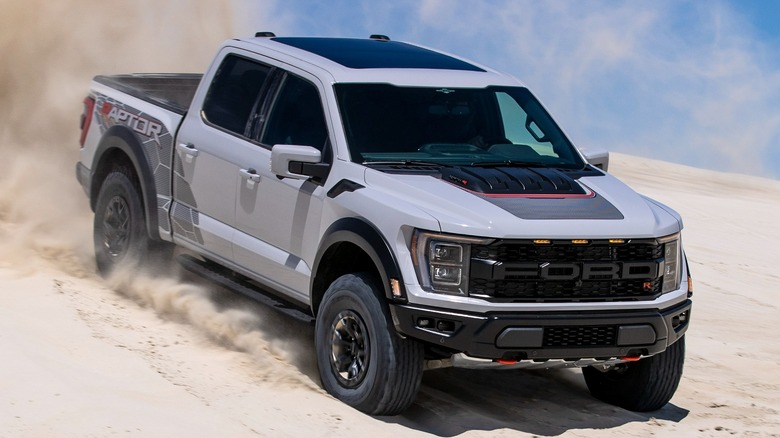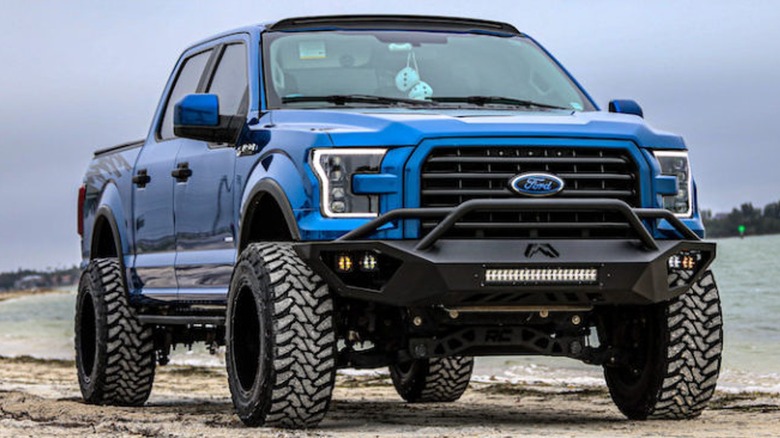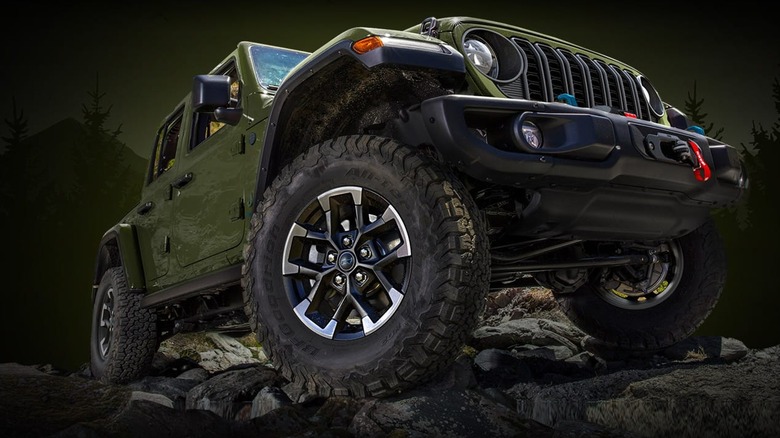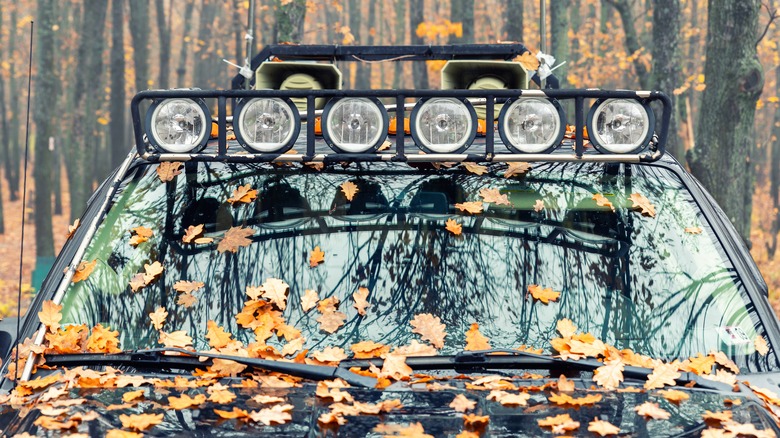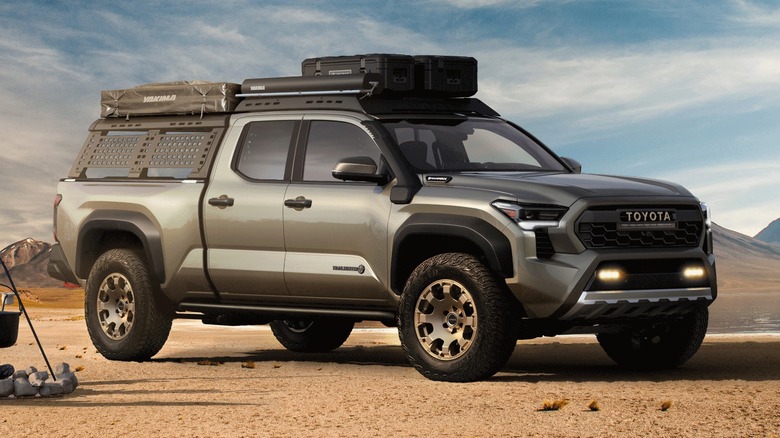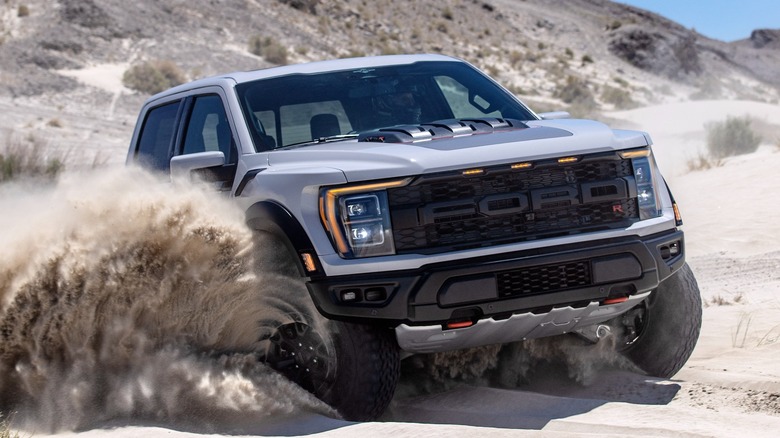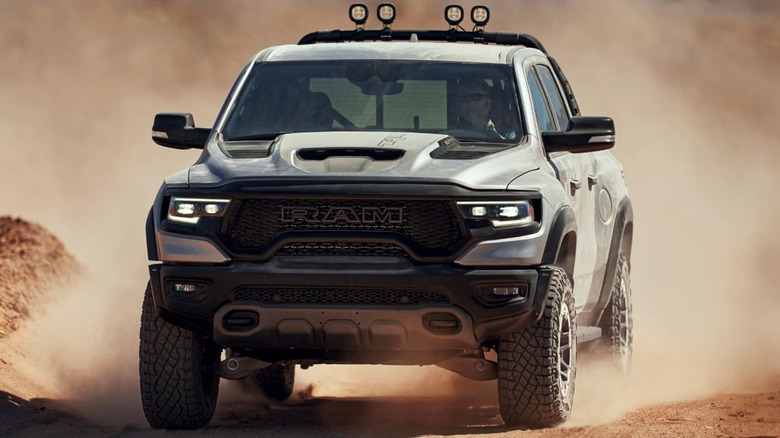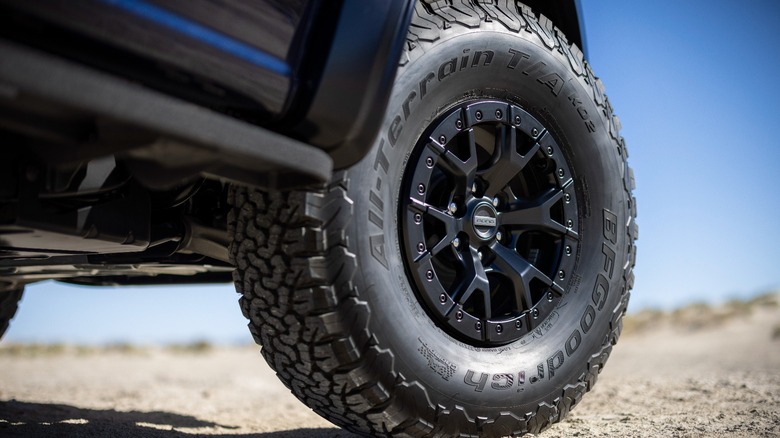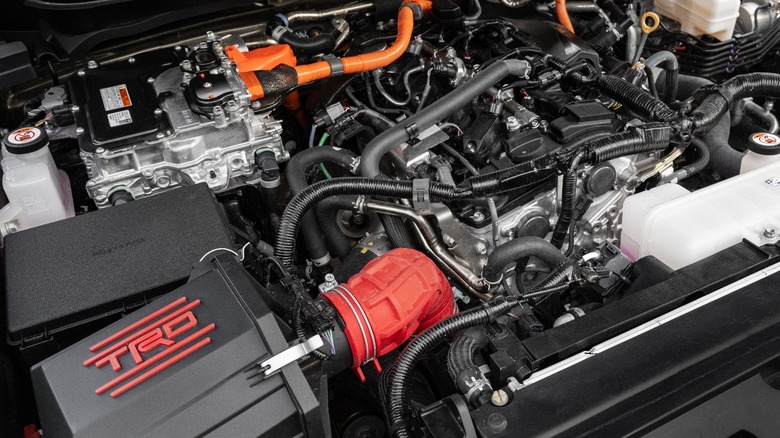8 Mods You'll Want If You're Taking Your Truck Off-Road
Conquering the trails requires a truck that can handle the challenge. For enthusiasts who crave untamed wilderness, most factory-fresh trucks, despite being sleek and powerful, can't handle truly unforgiving terrain. Sure, some models like the F-150 Raptor and Ram 1500 TRX might have impressive capabilities, but for an adventurer, there's always room for improvement.
These mods give you the ability to personalize your truck and elevate your off-road experience. We're not talking about chrome rims and flashy decals; we're diving deep into the world of functional modifications, the kind that transforms your truck into a legend of the trails. From protecting your truck with aftermarket bumpers to illuminating the path with better lighting systems, these modifications aren't just add-ons. They are an extension of your adventurous spirit, tools that empower you to push boundaries and navigate treacherous terrains with confidence.
Buckle up as we embark on a journey to explore essential off-road mods that will have you conquering the wilderness in style.
Aftermarket bumpers
Most modern bumpers are made from plastics and a reinforcement bar, prioritizing aesthetics over functionality. Automakers design these bumpers for low-speed collisions, helping reduce or prevent physical damage. While they are great for everyday driving, they lack the strength or clearance to tackle challenging terrain. Since these bumpers aren't designed as structural components, they often can't handle the rigors of off-roading.
Aftermarket bumpers act as armor, helping your truck withstand more off-road hazards. While aftermarket bumpers are heavier than most stock bumpers, most heavy-duty options won't even show minor scuffs. In addition, some also work with the truck's impact sensors, ensuring that your truck activates the airbags in case of a collision. Aftermarket bumpers are made from either aluminum or steel, helping make them stronger than most stock bumpers. Steel bumpers boast unparalleled strength, while aluminum offers a lighter-weight option.
In addition to providing better protection, aftermarket bumpers help improve your truck's aesthetics while giving it more tire clearance, thus freeing more space for larger tires. Aftermarket bumpers can also help provide better approach and departure angles, winch compatibility, and auxiliary light integration. These bumpers are a relatively simple modification to make on the truck, and they offer the freedom to explore without being inhibited by the fear of the unknown.
Recovery gear
While most manufacturers don't equip trucks with comprehensive recovery gear, some provide basic towing options like tow hitches, hooks, and optional winches. However, relying solely on factory-provided recovery gear might not be enough for most off-road situations. Therefore, before embarking on your next off-road adventure, you should understand the different types of recovery gear and identify the best options for your truck and terrain.
The basic pieces of recovery gear to consider include a kinetic recovery rope, traction boards, and d-rings. The kinetic rope is a better alternative to static tow straps since it offers controlled stretching and snapping to pull a stuck vehicle. Traction boards provide grip on loose surfaces, helping with self-recovery when stuck in snow, mud, or sand. D-rings offer secure connection points to ropes and winches.
For more complex situations, you can consider winches, a tire repair kit, and a shovel. While not always necessary, a winch can be a lifesaver in extreme conditions. It uses a synthetic rope or a cable to pull you directly from an anchor point, making it ideal for heavier-duty recoveries. When choosing a winch for your truck, pick one with a capacity exceeding your truck's weight and compatible with your aftermarket bumper.
While these pieces of recovery gear can come in handy, remember that they are only one piece of the puzzle. Furthermore, recovery can be dangerous. Thus, it's advisable to prioritize safety by involving experienced individuals and using proper techniques. You can also watch instructional videos — such as this YouTube clip from recovery equipment manufacturer Warn Industries – or take off-road recovery courses to better understand safe and effective recovery techniques.
Off-road lighting systems
When driving deep in the wilderness, your stock headlights may barely pierce the darkness, leaving you feeling like you're driving blindfolded. In such a scenario, you'll find off-road lighting systems to be more than just an upgrade but a necessity. Unlike the OEM options, off-road lights are specifically designed to conquer the challenges of off-road environments with superior light output that cuts through darkness and illuminates hidden obstacles. The enhanced visibility translates to a safer, more confident driving experience, allowing you to easily navigate uneven terrain, maneuver tight corners, and avoid hazards.
Compared to OEM lighting, off-road lights offer significant beam distance. These lights include LED light bars, spotlights, and fog lights, all offering a substantial leap in both power and functionality. Light bars, for example, provide a wide flood pattern to illuminate a vast area, while spotlights are ideal for navigating narrow trails and identifying distant landmarks. These lights boast weatherproof seals, durable casings, and vibration resistance, ensuring they withstand the harshest off-road conditions.
Off-road lights aren't just for night adventures. They also help in unpredictable weather conditions and dusty trails. Fog lights, for instance, can help you see through thick fog. Fortunately, installing off-road lights can be a DIY project since most kits have straightforward instructions and require minimal modifications to your truck. It's also advisable to remember that responsible off-roading goes hand in hand with responsible lighting. Therefore, be mindful of other off-roaders and wildlife and avoid causing unnecessary glare by using your lights judiciously.
Roof rack
While manufacturers like Ford offer roof racks or rails on selected models, these options are often fairly basic and lack the versatility required for serious off-roading. Opting for aftermarket solutions provides more strength and customization.
Since off-road adventures demand flexibility, installing a roof rack helps expand your truck's carrying capacity, freeing up precious space in the bed for essentials like recovery gear and coolers. Roof racks are also the ideal platforms for rooftop tents, transforming the truck into a mobile base camp under the stars. In addition, utilizing the roof space can help evenly distribute the weight of your gear, improving your truck's handling and stability, especially on uneven terrain.
Since not all roof racks are created equal, it's advisable to choose the one that exceeds the weight capacity of your anticipated load. Additional factors to consider when selecting a roof rack include corrosion resistance to handle the elements, a modular design for customization with accessories like light bars or tie-down points, ease of use to make it easier to install, remove, and adjust, and aerodynamics to help reduce drag and improve fuel efficiency.
Just like off-road lights, most roof racks are designed for DIY installation, offering clear instructions and user-friendly mounting systems. Some brands that reign supreme include Yakima, Thule, and Arksen. These brands make roof racks that are versatile, high quality, easy to use, and reliable.
Underbody protection
Nowadays, trucks like the Ford F-150 Raptor have underbody protection from the factory. Ford, for example, offers a skid plate kit that protects the transfer case and transmission from rock damage. While not all manufacturers provide robust underbody protection on their trucks, you should consider adding some if you plan to go off-road.
Your truck's undercarriage houses vital components like the transmission, transfer case, fuel tank, and engine oil pan. Venturing off-road exposes these components to a relentless beating from logs, rocks, and uneven terrain. Therefore, underbody protection acts as a suit of armor, deflecting impacts and preventing costly damage. In addition to safeguarding your truck, underbody protection helps extend your off-road adventures.
The most common components of underbody armor include skid plates. These are typically made from aluminum or steel, and they help shield vulnerable areas like the differential, transmission, and engine. In addition, rock sliders also come in handy, helping protect the body sides from damage during steep inclines or tight maneuvers. Unlike OEM solutions, these pieces of underbody protection have a wider range of choices, catering to different budgets. Furthermore, they can offer more comprehensive coverage, giving you peace of mind and the confidence to tackle tougher trails.
Fortunately, skid plates and rock sliders don't require professional installation. Most are designed for DIYers with readily available user guides and online resources. This makes it easier for even mechanically less inclined individuals to tackle the installation.
Suspension lift kits
Nowadays, manufacturers like Ram and Ford offer models with raised suspension from the factory. Take an example of the 2024 Ram 1500 TRX, which boasts factory-installed Bilstein shocks with 13 inches of front suspension travel, an impressive 11.8 inches of ground clearance, and 14 inches of rear suspension travel. Such a suspension setup is crucial for off-road adventures since it handles the dips and rises of the trail with our scraping the belly of the truck. Even if your truck has a great OEM suspension setup, you might benefit from a lift kit.
Installing a lift kit helps increase the space between the frame and the axles, giving you a better ability to tackle tougher terrain without the worry of getting stuck or damaging the undercarriage. In addition to ground clearance, lift kits offer better approach, breakover, and departure angles, allowing the truck to climb steeper inclines and descend without scraping the front and rear bumpers. Lift kits can also enhance stability and handling, especially on uneven terrain, keeping you in control even when the going gets tough.
While most modifications on this list are achievable at home, a lift kit requires specialized tools and knowledge, and improper installation can have serious consequences. In addition, lift kits can be pricier than most mods on this list, but their ability to alter the handling characteristics of your truck makes them more crucial for off-roading.
Grippy off-road tires
The main reason to switch to off-road tires for your truck is the additional grip on the trails. Off-road tires boast better traction on trails thanks to their enhanced toughness and heavy-duty tread patterns. While regular road tires prioritize smooth, quiet rides on paved roads, off-road tires offer better traction in challenging conditions. These tires boast sturdier sidewalls that can withstand the punishment of uneven terrain, reducing the risk of punctures and sidewall damage.
Fitting your truck with off-road tires, therefore, can help you conquer obstacles, navigate off-road terrain, and improve handling. Some of the best options to consider include Goodyear Wrangler DuraTrac, BFGoodrich All-Terrain T/A KO2, and Mickey Thompson Baja MTZ P3.
While it's possible to pair the tires with the OEM wheels, opting for off-road wheels has more benefits. These wheels are typically stronger and wider than OEM options, offering additional support for the larger, heavier off-road tires. They're also available with a wider offset, pushing the wheels outwards for better clearance and stability. Furthermore, these wheels come with a bold off-road aesthetic, complementing the rugged look of the truck.
Performance improvements
Adding larger tires, underbody protection, roof racks, and aftermarket bumpers increases the truck's overall weight. Therefore, it's only fair to boost the performance of your truck. Unless you have a truck with great performance, you should consider improvements like a cold air intake system, an exhaust system, and engine tuning. These upgrades help the truck handle the additional weight while tackling tougher terrains. They can be the difference between effortlessly pulling out of muddy ruts or towing your heavy gear through the trail.
For example, upgrading the air intake system helps the engine breathe easier, increasing horsepower and torque. On the other hand, the exhaust system eliminates any restrictions, freeing up trapped power and improving efficiency. Tuning the engine helps bring all these improvements together by recalibrating the ECU for optimized performance and fuel economy.
Additional performance improvements include forced induction, differential upgrade, and fuel system upgrade. While performance improvements like an air intake are easy to install, most of the other upgrades will require professional expertise to help you unlock the full potential of the truck.
